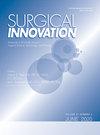Test-Only Learning via Virtual Patients to Improve Surgical Illness Scripts of Preclinical Medical Students as a Preparation for Clinical Clerkships: An Experimental Study
IF 1.2
4区 医学
Q3 SURGERY
引用次数: 0
Abstract
ObjectiveThe aim was to determine whether preclinical medical students can develop their illness scripts to a level comparable to that of clerkship students through test-only learning using repeated formative online testlets.MethodsIn this experimental study, participants were 52 preclinical and 53 clinical medical students. The intervention group consisted of preclinical medical students, and the control group consisted of clinical medical students. The intervention group responded to online testlets containing feedback, an innovative formative assessment method called ContExtended Questions, on general surgery for 8 days by spending no more than 30 minutes each day. The control group completed the general surgery clerkship. The performances were assessed using 20 Key-Feature Question items. The intervention group was assessed twice: immediately after the intervention (the immediate test), and again 1 month later (the delayed test). The control group was assessed once, immediately after the clerkship. All performance tests were identical.ResultsThe preclinical students had a significantly higher mean score on the immediate test (83.1 ± 9.6) compared to the clinical students (75.4 ± 8.9), P < .001. The effect size (Cohen’s d) was .83. However, the mean score in the delayed test (76.9 ± 13.6) was not significantly different from clinical students’ mean score (75.4 ± 8.9), P > .05.ConclusionsTest-only learning as a spaced repetition of online formative testlets is effective in preparing preclinical medical students to the clinical clerkship. Through using this approach in preclinical period, they can prepare themselves for the clinical environment to optimize the benefits derived from clerkships.通过虚拟病人进行纯测试学习,改进临床前医科学生的外科疾病脚本,为临床实习做准备:一项实验研究
方法在这项实验研究中,参与者包括52名临床前医学生和53名临床医学生。干预组由临床前医科学生组成,对照组由临床医科学生组成。干预组在 8 天时间里,每天花不超过 30 分钟的时间对包含反馈信息的在线测试卷(一种名为 ContExtended Questions 的创新型形成性评估方法)进行回复,内容涉及普通外科。对照组完成了普通外科实习。使用 20 个关键特征问题项目对他们的表现进行评估。干预组接受了两次评估:干预结束后立即进行(即时测试),一个月后再次进行(延迟测试)。对照组在实习结束后立即进行一次评估。结果临床前学生在即时测试中的平均得分(83.1 ± 9.6)明显高于临床学生(75.4 ± 8.9),P < .001。效应大小(Cohen's d)为 0.83。然而,延迟测试的平均得分(76.9 ± 13.6)与临床学生的平均得分(75.4 ± 8.9)没有显著差异,P >.05.结论纯测试学习作为间隔重复的在线形成性测试单元,能有效帮助临床前医学生为临床实习做好准备。通过在临床前阶段使用这种方法,他们可以为临床环境做好准备,从而最大限度地从实习中获益。
本文章由计算机程序翻译,如有差异,请以英文原文为准。
求助全文
约1分钟内获得全文
求助全文
来源期刊

Surgical Innovation
医学-外科
CiteScore
2.90
自引率
0.00%
发文量
72
审稿时长
6-12 weeks
期刊介绍:
Surgical Innovation (SRI) is a peer-reviewed bi-monthly journal focusing on minimally invasive surgical techniques, new instruments such as laparoscopes and endoscopes, and new technologies. SRI prepares surgeons to think and work in "the operating room of the future" through learning new techniques, understanding and adapting to new technologies, maintaining surgical competencies, and applying surgical outcomes data to their practices. This journal is a member of the Committee on Publication Ethics (COPE).
 求助内容:
求助内容: 应助结果提醒方式:
应助结果提醒方式:


